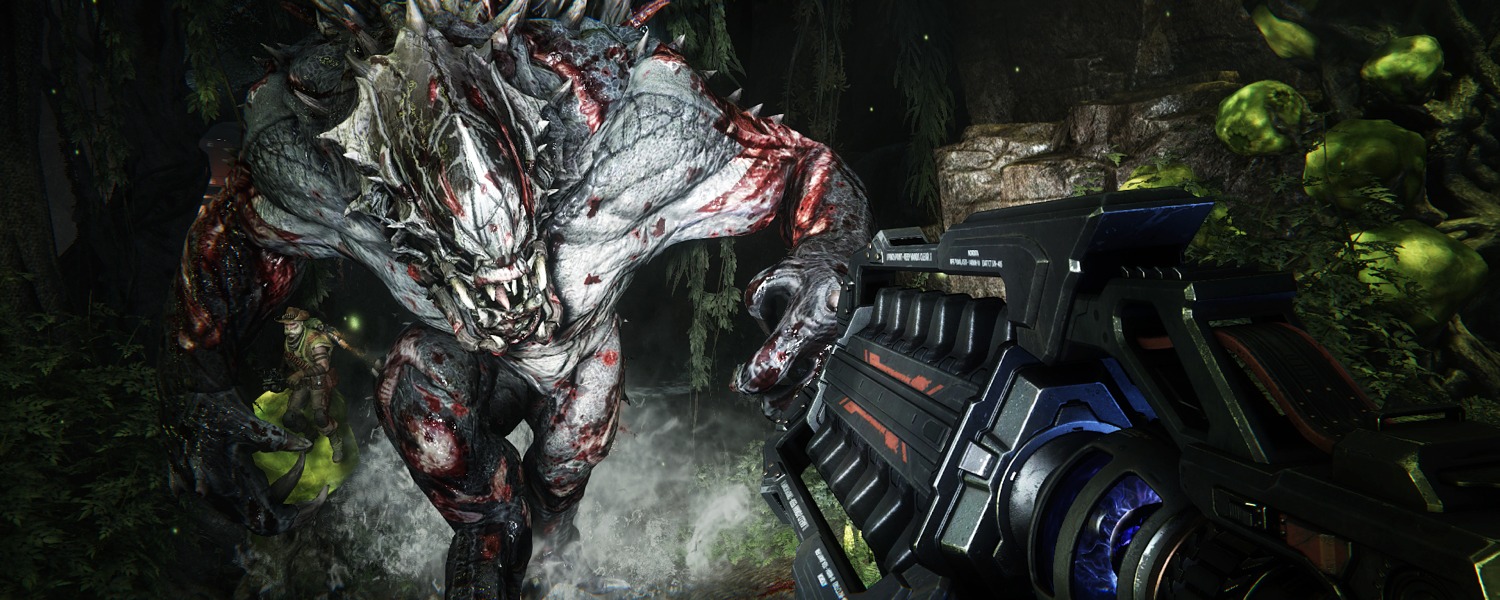If you wanted to show off today's best PC gaming graphics, which title would you choose? There are many games to consider, but 2013's Battlefield 4 stands out as a prime candidate, perhaps along with Dragon Age: Inquisition that is also powered by the Frostbite 3 engine. Although it's almost two years old now, you could also make a strong case for the visuals in Crysis 3.
More than a dozen games have been built using CryEngine 3 but none look quite as nice as Crysis in our opinion, while the fourth iteration of CryEngine has only really been used by late 2013's Ryse: Son of Rome, which largely bombed but not because it was ugly – its graphics were among the only positive qualities that reviewers could find.
We've been eagerly anticipating more games based on the latest CryEngine – which is now referred to without a version number – and that wait is now over: From the creators of Left 4 Dead, Evolve launched this week on PC, Xbox One and PS4.
Developed by Turtle Rock Studios, Evolve is a squad-based co-op shooter that calls for some fairly beefy hardware. Recommended system specifications list an Intel Core i7-920 or AMD A8-3870K coupled with a GeForce GTX 760 or Radeon R9 280, as well as 6GB of RAM and 50GB of storage.
It's worth noting that in spite of its extended beta, the game was still released with a hefty 3GB zero-day patch for general bug fixes, balancing tweaks, as well as game and level loading optimizations – not the most encouraging start but definitely better than fixing stuff a month after release. Gameplay reviews have been mixed thus far, but we'll let them speak for themselves – we are here to benchmark the heck out of Evolve today.
Testing Methodology
We used the latest AMD and Nvidia drivers on 25 DirectX 11 graphics card configurations covering all price ranges. Our test rig was outfitted with the Intel Core i7-5960X to remove CPU bottlenecks that could influence high-end GPU scores.
We used Fraps to record 90 seconds of gameplay for benchmarking. For testing we made a custom solo mission using the 'Aviary' map. The test starts aboard the drop ship and ends roughly 40 seconds after hitting the ground. Each time we took the same path and the AI controlled players would follow.
For each graphics card the tests were run three times and the average was taken, more often than not the results were within a few frames of one another.
We tested using 1366x768, 1920x1080 and 2560x1600 resolutions using the 'Very High' quality preset, though we changed the anti-aliasing mode to FXAA.
Test System Specs
- Intel Core i7-5960X(3.00GHz)
- x4 4GB Kingston Predator DDR4-2400 (CAS 12-13-13-24)
- Asrock X99 Extreme6 (Intel X99)
- Silverstone Strider Series (700w)
- Samsung SSD 850 Pro 512GB (SATA 6Gb/s)
- Gigabyte Radeon R9 290X (4096MB)
- Gigabyte Radeon R9 290 (4096MB)
- Gigabyte Radeon R9 285 (2048MB)
- Gigabyte Radeon R9 280X (3072MB)
- HIS Radeon R9 270X (2048MB)
- HIS Radeon R9 270 (2048MB)
- HIS Radeon R7 265 (2048MB)
- HIS Radeon HD 7970 GHz (3072MB)
- HIS Radeon HD 7970 (3072MB)
- HIS Radeon HD 7950 (3072MB)
- HIS Radeon HD 7870 (2048MB)
- HIS Radeon HD 7850 (2048MB)
- Gigabyte GeForce GTX Titan (6144MB)
- Gigabyte GeForce GTX 980 (4096MB)
- Gigabyte GeForce GTX 970 (4096MB)
- Gigabyte GeForce GTX 960 (2048MB)
- Gigabyte GeForce GTX 780 Ti (3072MB)
- Gigabyte GeForce GTX 780 (3072MB)
- Gigabyte GeForce GTX 770 (2048MB)
- Palit GeForce GTX 760 (2048MB)
- Gigabyte GeForce GTX 750 Ti (2048MB)
- Gainward GeForce GTX 680 (2048MB)
- Gainward GeForce GTX 660 Ti (2048MB)
- Gainward GeForce GTX 660 (2048MB)
- Microsoft Windows 8.1 Pro 64-bit
- Nvidia GeForce 347.52 WHQL
- AMD Catalyst 14.12 Omega

